ACTIVITIES
The island of La Gomera offers a wide range of activities for visitors wishing to explore its natural beauty, rich culture and history. Some of the most popular activities include:
Hiking: La Gomera has an extensive network of footpaths through its varied landscape, including the Garajonay National Park and its dense laurel forests, as well as ravines, cliffs and mountains.
Bird watching: The island is a paradise for bird lovers, with a wide variety of endemic and migratory species inhabiting its diverse habitats.
Boat trips: Explore the coast of La Gomera on a boat trip, where you can spot whales, dolphins and other sea creatures in their natural habitat.
Visit to the viewpoints: Enjoy breathtaking panoramic views from the island's many lookout points, which offer views of mountainous landscapes, cliffs and the ocean.
Visit to the historic villages: Explore the charming villages of La Gomera, such as San Sebastián, Hermigua and Agulo, which boast cobbled streets, traditional houses and a rich history.
Observation of the silbo gomero: Attend a demonstration of this traditional whistled language of La Gomera, which has been declared Intangible Cultural Heritage of Humanity by UNESCO.
Diving and snorkelling: Discover the marine life of La Gomera by diving and snorkelling in its crystal clear waters and colourful reefs.
Tasting of local gastronomy: Try traditional La Gomera dishes such as almogrote, watercress stew and fresh fish, accompanied by local wines.

PLACES OF INTEREST
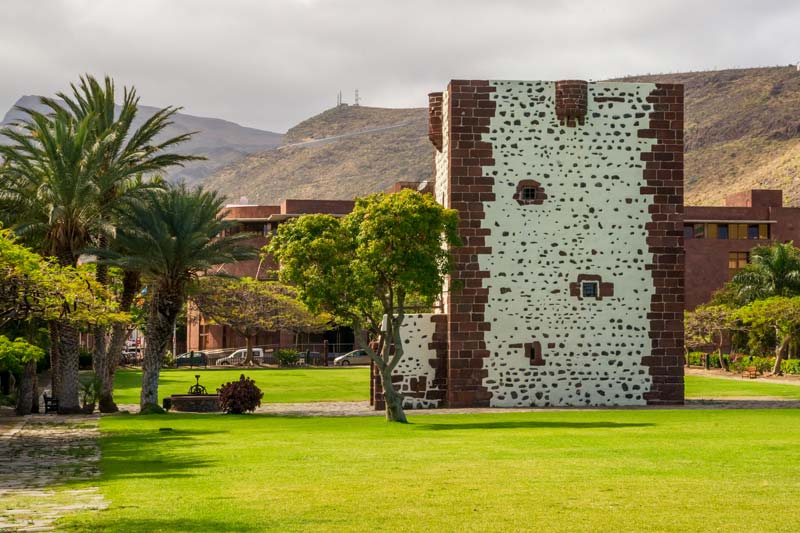
San Sebastián de La Gomera, the island's capital, offers a unique combination of history and natural beauty, making it one of the top destinations on La Gomera. With cobbled streets, colourful houses and colonial architecture, the town exudes a tranquil atmosphere, perfect for travellers looking to escape the hustle and bustle of the city. Must-see sights include the Torreón del Conde, a 15th-century fortress that was key during the Age of Discovery, the Plaza de la Constitución, a social centre surrounded by historic buildings, and the church of Nuestra Señora de la Asunción, noted for its Gothic style. In addition, the port of San Sebastián has a notable historical significance, as it was the departure point for Christopher Columbus' voyage to America in 1492.
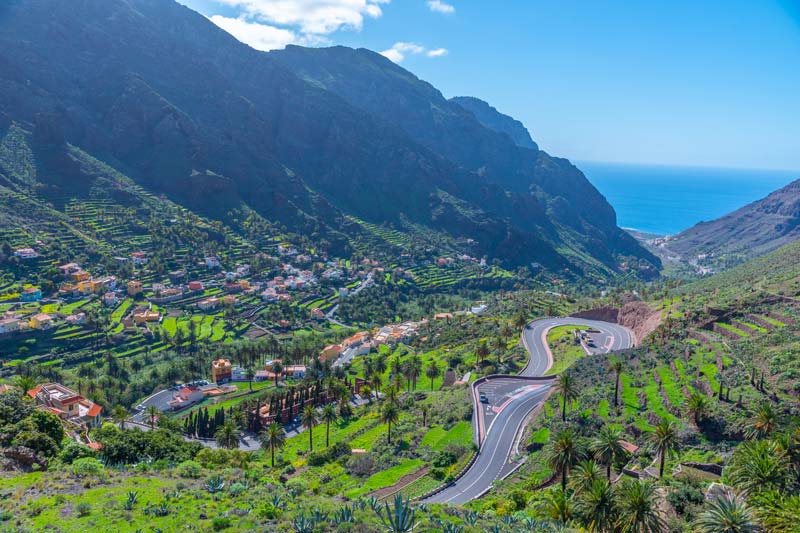
Valle Gran Rey, a central tourist destination on La Gomera, stretches from the mountains to the beach, offering a varied experience for visitors. Although it is not crowded with tourists, it is perfect for strolling, relaxing on the beach and sampling the delicious local cuisine, which includes biscuits and palm honey. This place has impressive cliffs surrounding the bay, providing breathtaking views, and serves as a starting point for exploring the trails of the Garajonay National Park. Highlights in Valle Gran Rey include Charco del Conde, Playa la Calera and Playa del Inglés, the latter accessible after a short walk and popular with nudists. Playa de las Vueltas is famous for allowing you to see manta rays swimming very close to the shore, an incredible experience for travellers. In addition, the altitude of central La Gomera offers numerous viewpoints with spectacular views, such as the Mirador de Cesar Manrique and the Mirador de la Curva de Queso.
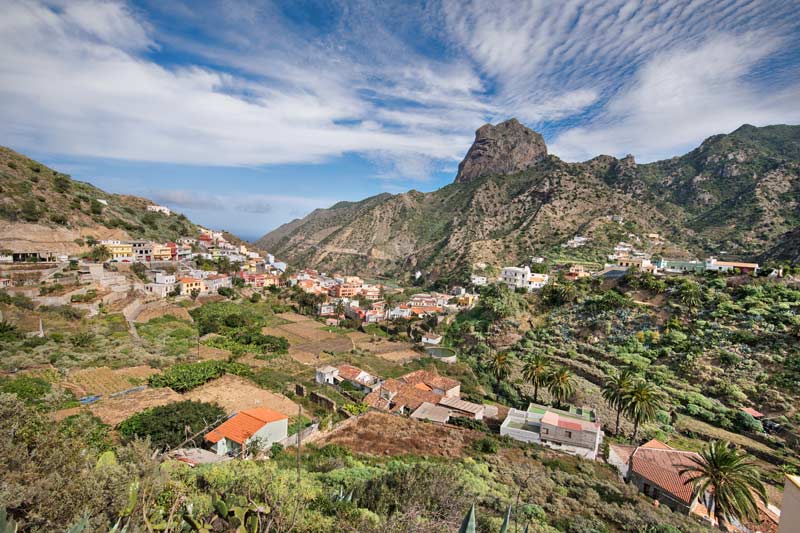
Vallehermoso stands out for its charming historic quarter, one of the most beautiful in La Gomera, which is reason enough to explore this municipality. We recommend starting your walk from the Plaza de la Constitución square and going through the neighbourhoods of Triana and Vegeta, inspired by those of Gran Canaria, with typical Canarian houses, until you reach the imposing Church of San Juan Bautista. Another highlight is the hamlet of Tamargada, surrounded by palm groves and picturesque landscapes, where you will find the impressive Ermita de la Virgen de la Caridad del Cobre. Food lovers should try the almogrote, a pâté made with red mojo sauce and local cheese, typical of the area. You can also visit other hamlets such as Epina, El Cercado and Arguamul, the latter known for a Buddha abandoned on the road because of its weight, which has become a local curiosity. The area is also home to La Encantadora Dam, a reservoir used for irrigation, as well as the Castillo del Mar and the Botanical Gardens of Vallehermoso, which are well worth a visit.
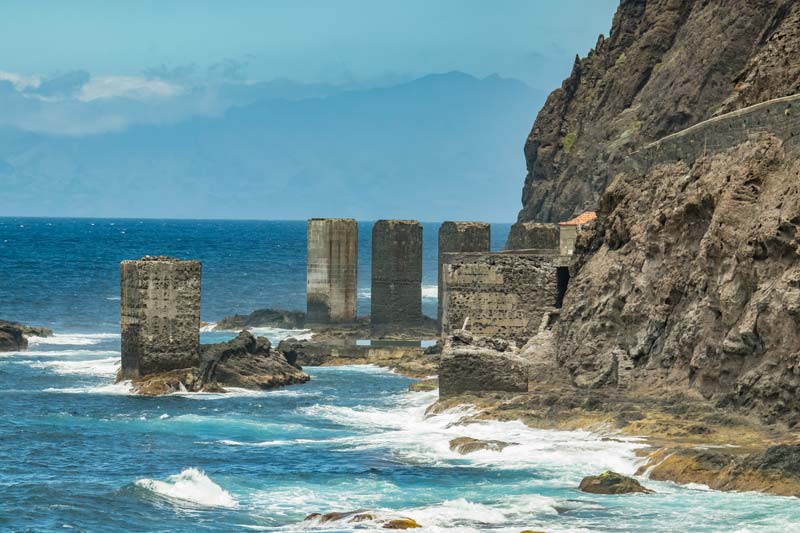
Hermigua offers a unique opportunity to explore the typical cultivated hillsides of La Gomera and, with luck, hear the famous silbo gomero, an outstanding experience on the island. Among its points of interest are the church and convent of Santo Domingo, the Church of Nuestra Señora de la Encarnación and the Pescante de Hermigua, the island's old port which was in operation for 42 years and is now abandoned, but remains one of the most emblematic places to photograph on La Gomera. In addition, from Hermigua you can visit the Ethnographic Park of La Gomera Los Telares to learn about the island's traditions.
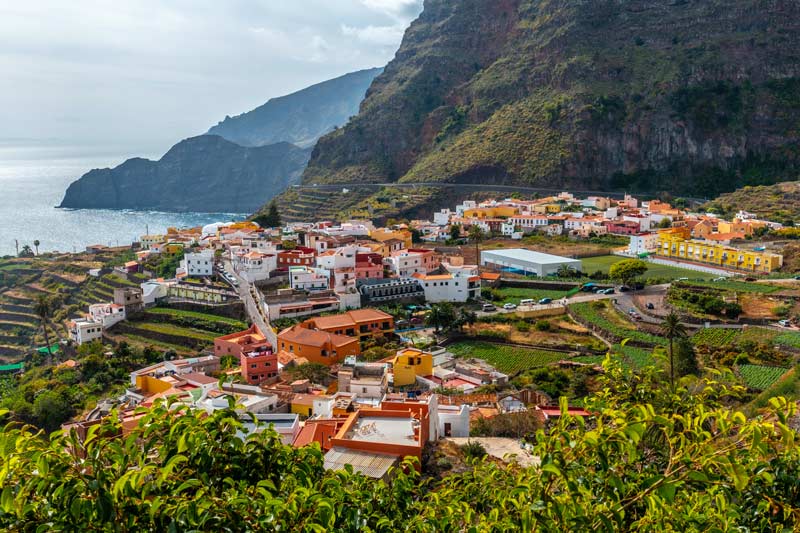
Agulo stands out as one of the most charming villages of La Gomera, thanks to its beautiful historic centre and its picturesque cobbled streets that evoke times gone by. Walking through its streets, such as the Church of San Marcos, you get the sensation of travelling back in time. In addition to its architectural charm, Agulo offers breathtaking views of the island of Tenerife, especially from the church. From some viewpoints at the top of the village, you can admire spectacular sunsets, making Agulo one of the most photogenic destinations in the Canary Islands. It is recommended to explore the village without haste, allowing yourself to discover its charms at every step.
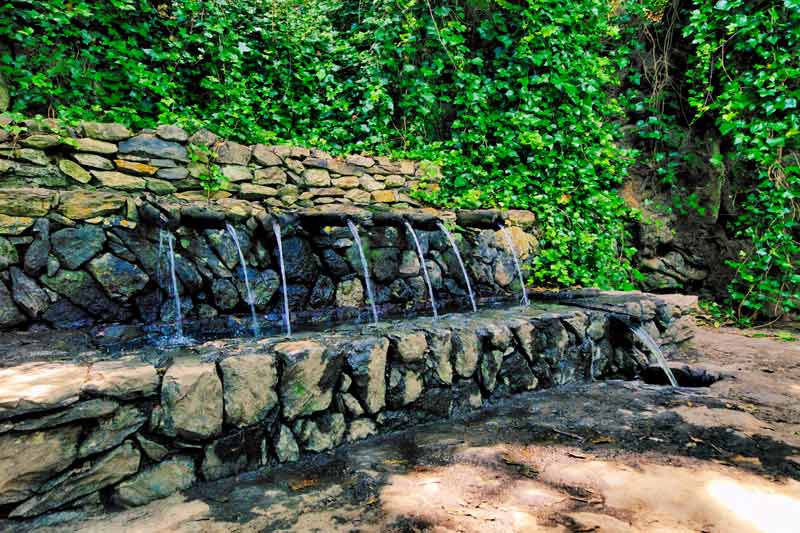
The Chorros de Epina are an unmissable visit in La Gomera, known for the waterfalls and pools of water that form along the Epina ravine, creating a mysterious atmosphere that captivates visitors. To get there, from the village of the same name you can take a small, easy trail that starts at the Chorros de Epina restaurant. After approximately 15 minutes of descent, you will reach the Hermitage of San Isidro Labrador, and a little further on you will find the seven jets of Epina. This place is surrounded by local legends and is popular with those seeking love or healing properties. According to the legends, clear and calm water promises happiness in love, while murky water augurs misfortune. Drinking from odd or even streams is also said to have healing properties, depending on gender, and the seventh stream is especially beneficial for women wishing to become pregnant, a practice also performed by the island's ancient witches. These stories add a special touch to a visit to this beautiful corner of La Gomera.
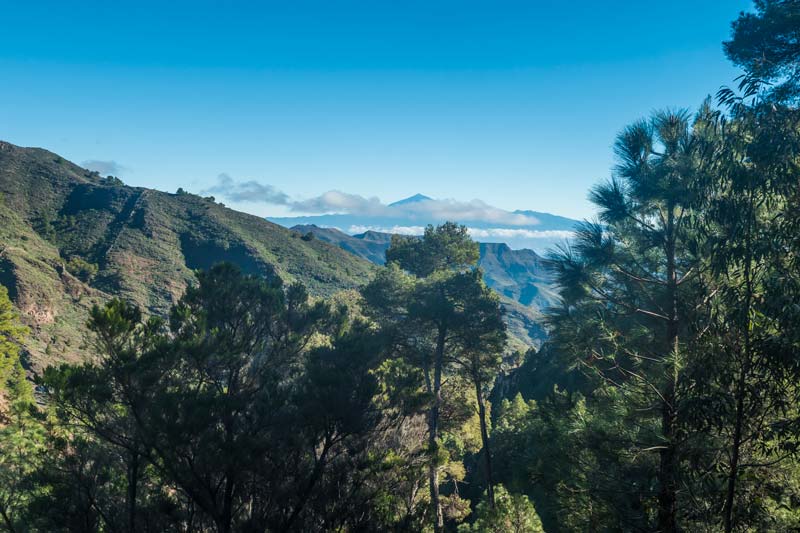
Garajonay National Park, located in the centre of La Gomera, is a stunning example of laurel forest, a subtropical rainforest that has existed for millions of years. Recognised as a UNESCO World Heritage Site, this 40-square-kilometre park stands out for its unique biodiversity, with numerous endemic species of flora and fauna. It is a must-see destination on the island, especially for hiking enthusiasts, with a network of trails leading to strategic viewpoints such as the Mirador de la Degollada de Peraza, which offers breathtaking panoramic views. The lush forests, deep ravines and mountain peaks create a spectacular landscape that deserves to be explored. Trails numbers 7 and 17 lead to the highest point of La Gomera, offering breathtaking views of the Canary Islands. In addition to its ecological value, Garajonay is home to cultural sites such as Roque Blanco, a rock formation of archaeological importance. A curiosity about the park's name is that it is attributed to an aboriginal legend, although it is also believed to simply mean "high rock" in the Guanche language.
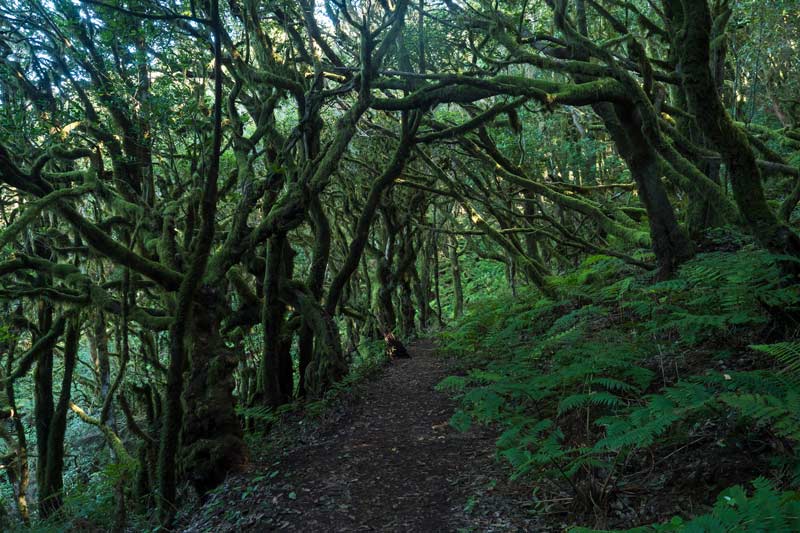
One of the main attractions of La Gomera and an essential activity is a visit to the Cedar Forest, located in the Garajonay National Park, recognised as a World Heritage Site by UNESCO. This natural treasure covers an extensive area of laurel forest, a type of subtropical rainforest unique to the Canary Islands archipelago, dominated by the Canary Island cedar. The ancient forest creates a magical environment with its dense mist and a variety of plants such as ferns, lichens and mosses, contributing to the formation of a unique ecosystem. There are several routes to explore the forest, with the 3 km circular route from the Visitor Centre being the most popular and accessible. Due to the frequent presence of fog, it is advisable to wear suitable footwear and warm clothing. It is advisable to consult the official website for detailed information on the trails, their characteristics and difficulty.
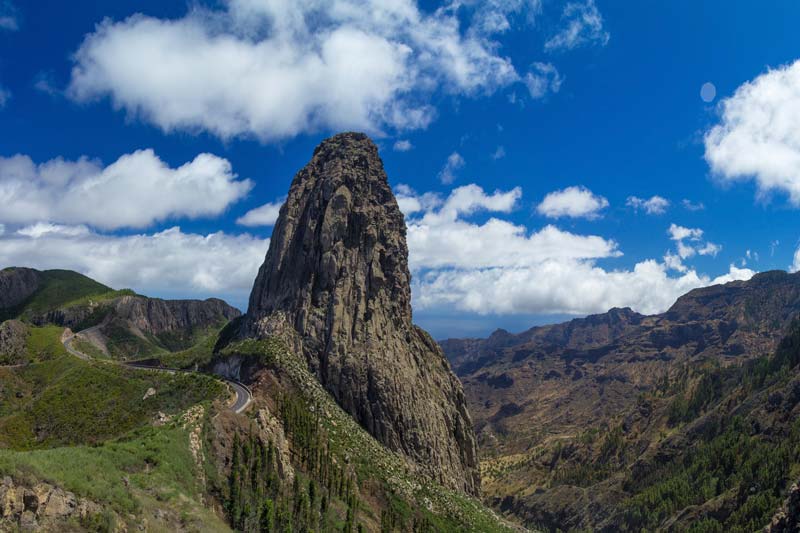
Roque de Agando is an impressive rock formation that rises 1,250 metres above sea level, standing out as one of the most emblematic geological points of La Gomera. In addition to its beauty, it offers impressive panoramic views of the surrounding area, including the Garajonay National Park and the extensive laurel forests that characterise the island. This place also has a cultural and spiritual value for the inhabitants of La Gomera, who have associated it with local legends and rituals, such as the belief that the rock and those around it are petrified lovers, destined to be reunited by erosion. From here there are several trails that allow you to explore the island's beautiful scenery. For those without a car, an excellent option for visiting this place and other points of interest on La Gomera is to book a tour of the island's interior.
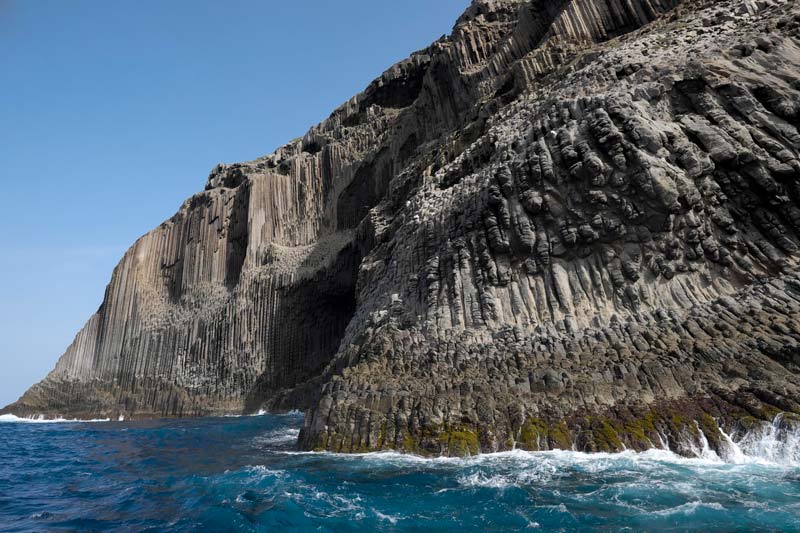
The Los Órganos Natural Monument, located on the north coast of La Gomera, is an impressive geological wonder that captivates with its imposing rock formations. These formations stand out for their vertical ravines that plunge into the Atlantic, creating a unique landscape on the island. Like other places in the world such as Iceland, this cliff is characterised by its basalt columns that resemble organic tubes, hence its name. The Organs were formed through geological processes, such as the slow solidification of lava, creating a series of hexagonal pillars that extend from the cliffs towards the ocean, offering a spectacular view. The natural monument can be accessed via trails that cross the cliffs, providing breathtaking panoramic views of both La Gomera and Tenerife.
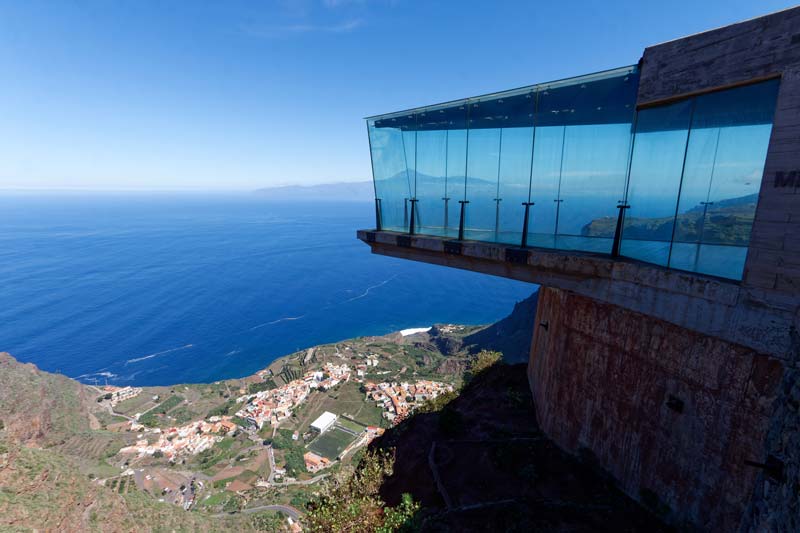
The Abrante viewpoint is a must-visit in La Gomera to enjoy spectacular views. Built in 2014 on the cliff of Agulo, this viewpoint has a 7-metre long glass walkway that rises some 200 metres above the village of the same name. Integrated within the restaurant of the same name, the viewpoint offers the opportunity to enjoy an unforgettable experience, whether eating in the restaurant or simply having a coffee while contemplating the breathtaking scenery of La Gomera. On clear days, the silhouette of El Teide and the island of Tenerife can be seen from this viewpoint, adding an extra touch to the experience. Although admission is free, the full gastronomic experience adds special value to the visit.
The island is characterised by its impressive mountains, ravines and cliffs, making it a paradise for lovers of panoramic views and nature. Other outstanding viewpoints are the Tagaragunche viewpoint, the Degollada viewpoint, the Asomadita viewpoint, the Igualero viewpoint with its monument to the silbo canario, and the El Sombrero and Las Trincheras viewpoints. It is recommended to include these viewpoints in the route and to stop at each one to enjoy unforgettable views. On an official map you can find the 30 viewpoints distributed throughout the island, along with the legends and stories surrounding them, from pirate attacks to the Canarian whistle. Each viewpoint has its own charm and offers wonderful views that will remain etched in the visitor's memory.